Video
-
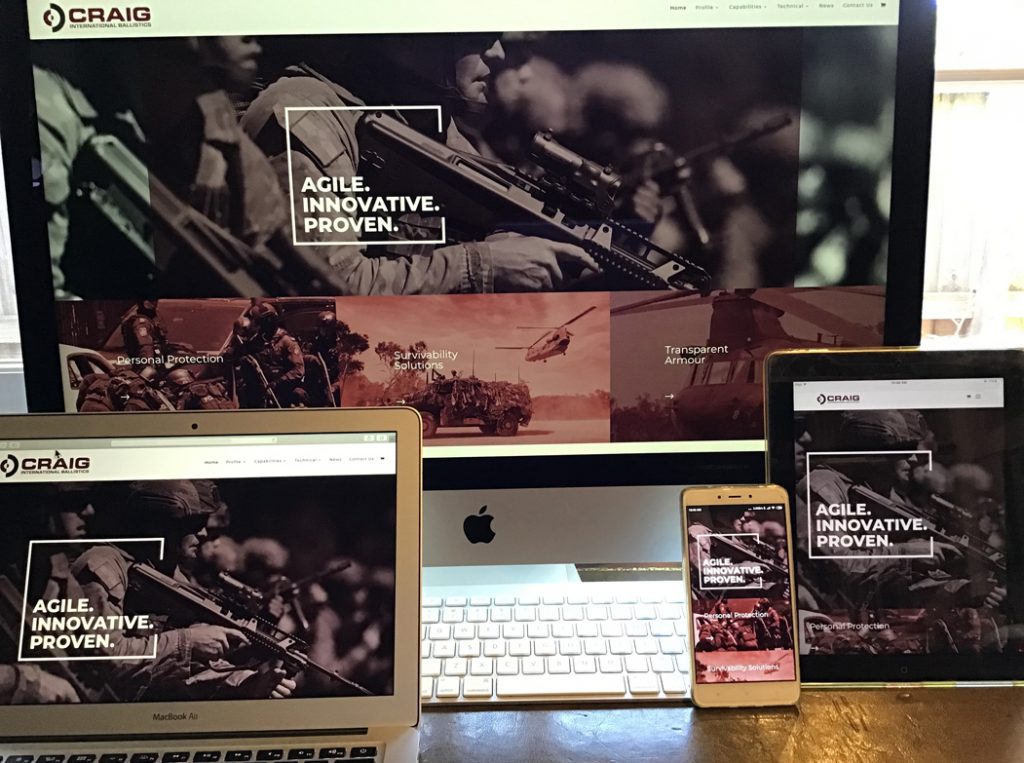
Australian defence supplier website launched
June 16, 2020Defence and Security are (and will always be) critical to the order of communities, the independence of nations and the survival of civilisations. Queensland defence contractor and ballistic component manufacturer Craig International Ballistics, is a significant brand in the Defence and Security sector. In the past, Craig International Ballistics has engaged Digital Tsunami to refine the Craig identity, develop an online presence, design print collaterals, and shoot photography and video. For the second time, Digital Tsunami has been commissioned to develop a new Craig web presence in addition to refreshing the brandline and conceiving a digital and print ad campaign. The online presence showcases products and offers detailed information on internationally recognised ballistic standards. A manufacturer of ballistic panels for body armour worn by police officers and military forces, Craig International Ballistics is constantly investing in R&D, new technology and new manufacturing hardware. With a dynamic approach to meeting client requirements, Craig is able to rapidly respond to constantly evolving market forces. This approach has delivered superlative ballistic products and whole-of-life maintenance systems protecting army, navy and air forces in conflict zones around the globe. As a result, a brandline was created to reflect these key attributes: Agile. Innovative. Proven. This brandline became a prominent feature in the new online presence and advertising campaign. Digital Tsunami always aims to thoroughly research and understand the objectives of a client, so that solutions offered meet these requirements and present the brand in the most positive way. ballistics.com.au -
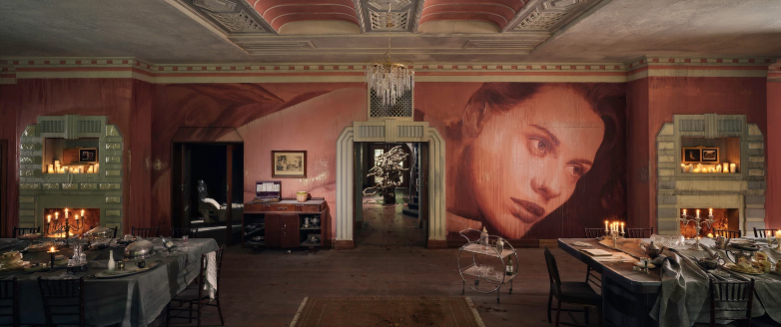
Capturing time
June 30, 2019Aesthetically, a highlight of recent projects was our pro bono support of a Melbourne artist rapidly gaining international recognition. Starting as a talented street artist, Rone recently spent a year designing an ephemeral immersive installation in a 1930s streamline-moderne mansion in Melbourne's outskirts. Entitled 'Empire', the interior of the derelict Burnham Beeches, was filled with furniture, light fittings, table settings and framed artworks, juxtaposed with the decay of peeling wallpaper, decomposing paint, penetrating trees and pervasive leaf litter. On the walls of thirteen rooms, Rone painted oversize portraits of a young woman's face. With subdued lighting and evocative music (composed for the installation), and a virtual reality tour (on head-mounted-displays), the effect on visitors ranged from an aesthetic appreciation to a visceral emotion. As an admirer of Rone's artwork, Andrew W Morse was delighted to meet the artist during a visit to the exhibition, and offered to contribute to his future projects. That opportunity arose just days later, when Rone called to ask us to arrange a hyperlapse shoot to document the installation as it was disassembled. All artists are aware of their own mortality and the impermanence of their works. Time, materials, sunlight, nature and human action can all contribute to damage and the eventual destruction of many artworks. Some 'street' artists actively embrace the temporary nature of their work; whether Banksy intentionally starting to shred a framed work immediately after being sold at auction or Rone painting his work on a condemned building. Hyperlapse is the term given to a time-lapse in which the camera is moving. Digital Tsunami coordinated delivery of dolly track and stabilising weights and an advanced motion-control camera system by which the hyperlapse could be captured. On the shoot day, a specific path was devised to match a sixty second piece of custom composed music. The camera position (track, pan, tilt, and focus) was replicated precisely in scores of takes to the exact duration of the music. On each 'pass', elements within the foreground and background were progressively removed until all remaining was a white painted bare shell. During the edit, the many takes were frame aligned and then a succession of dissolves created the impression of solid objects transitioning through an ethereal presence to a mere hint of memory. The films produced by Rone of the Empire project all celebrated its intrinsic impermanence, none more so than the hyperlapse sequence of a 30 metre dining room as it transformed from a fully furnished to an empty room. Film is an emotive medium. The hyperlapse sequence of Rone's Empire achieved extraordinary impact by visually capturing the very essence of the temporary. Speaking of Empire, Rone said "long after the paintings are gone, this photographic memoir and accompanying soundtrack will present an opportunity to .. be transported to this special space that we reclaimed, albeit fleetingly". Watch the hyperlapse. conceptualiser: Rone production: Rone and Andrew W Morse venue: Shannon Bennett, Adam Garrisson interior stylist: Carly Spooner organic sculptures: Wona Bae, Charlie Lawler composer: Nick Batterham muse: Lily Sullivan lighting cameraman: Chris Matthews motion control rig operator: Gerald Thompson https://r-o-n-e.com/empire -
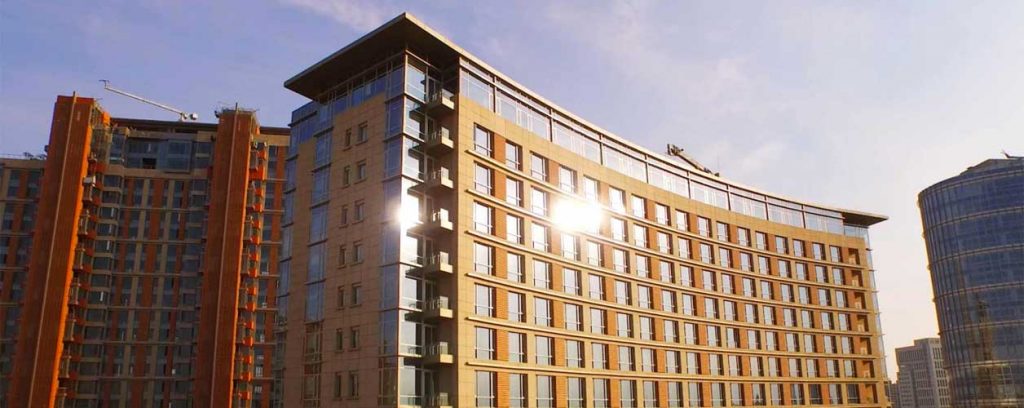
Sector showreel 2018
July 24, 2018For constantly repeating display in The Studio, Digital Tsunami has compiled a 90 second showreel. The sequences include HD time-lapse, and 4k resolution aerials, computer animations & location segments. Sectors featured include: energy / resources, property / real estate, construction / engineering, manufacturing and supply chain. Footage was filmed on locations in both northern and southern hemispheres. In recent years, projects have taken us to diverse locations from densely urban Hong Kong and Shanghai to remote southern Nevada and Inner Mongolia. Digital Tsunami has the experience and resources to shoot photography, aerials, time-lapse and video in studio in Sydney, or on location anywhere in the world. Whether product shots for FMCG marketing or documenting a long construction project, Digital Tsunami listens to your specific requirements and suggests options to deliver the message to your target audiences with impact. watch the video showreel -
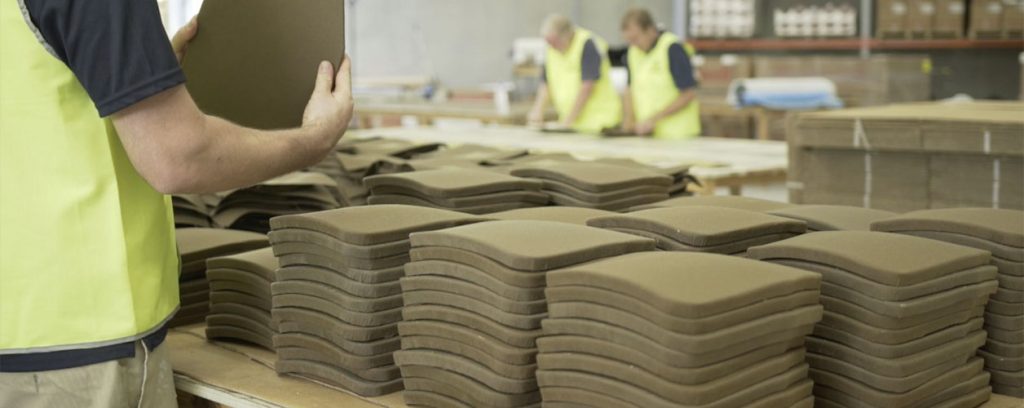
Defence supplier video released
July 28, 2016One of the greatest joys of filmmaking is the constant acquisition of knowledge. Every project (feature film, television commercial, documentary or corporate video) offers opportunities to learn. Information can be discovered, whether about a new image capture technology, a time in history, management insights, or the technical aspects of a particular manufacturing process. A corporate video recently produced by Digital Tsunami, offered opportunities to learn more about the latest filmmaking equipment and advanced ballistic panel manufacturing. The client was defence contractor, Craig International Ballistics. The subject was the manufacture of ballistic panels for body armour worn by the Australian armed forces. The filming locations were a manufacturing plant south of Brisbane and a testing facility in Melbourne. Digital Tsunami had previously developed a refined identity and responsive web presence for the company. During our four days of filming, we had a range of mounts and 4K cameras at our disposal: tripods, a slider, a Ronin hand-held gimbal camera, Sony action cams, a DJI OSMO hand-held gimbal camera, and a DJI Inspire One UAV. This range of camera platforms allowed us to capture a diversity of camera angles, from 1,000 feet in the air, to wide angle and extreme close up. The OSMO was released in late 2015, and; along with all the other cameras; delivers 4K resolution. A location ‘recce’ of the property enabled the director to prepare a schedule and storyboard. This maximised efficiency, both for gaining client approval of content, but also for creative conceptualisation and preparation for the camera teams. As a result, we were able to attain a very high number of camera setups each day. We captured multiple angles of each piece of action and therefore great diversity of options in the editing room. Movement was achieved either in the subject or with camera, so that the combination of a quick cutting style and rapid screen captions, together with a fast music track, provided dynamism and engagement. The aerial video was utilised to apply visual consistency in 'bookends' to the film. We started in the sky above Queensland as we descended toward the manufacturing facility, then ended by ascending as a truck bearing pallets of ballistic panels drove off along a highway. While filming inside the manufacturing plant and testing lab, we learnt about materials and processes relating to ballistic panels. The multiple layers of Kevlar and Spectra fabric which create panels that are lighter and stronger than steel; the laminated glass which can resist a high velocity NATO round to meet NIJ standards; and the innovation which Craig International Ballistics has applied to the tracking and shipping of panels, compliant with military standards. By understanding the criteria which apply to any client’s business, we are in a position to take an approach to marketing, which meets these requirements and presents the brand in the most positive way. So from creative and commercial perspectives, the learning which is most important .. is learning about our clients. -

4K, or not 4K
July 18, 2016Rather than paraphrasing The Bard of Avon, with "4K, or not 4K", maybe we should say "4K .. or Ultra HD"? Even as we shoot motion footage today, there are cameras (and monitors) offering a resolution way beyond the current television broadcast standard of HD. HD or High Definition, displays an image 1920 pixels wide by 1080 pixels high. In the industry, individuals use different terms for this resolution. Broadcasters may call it ‘1080’, following the practice of defining horizontal scan lines, as a PAL image is ‘625’ and NTSC is ‘525’. Some use the terms ‘1080p’ (for progressive scan) of 30 frames per second (fps) and ‘1080i’ (for interlaced) at 60 fields per second, referring to the two fields within each frame. Computer programmers and graphic designers; who commonly refer to a measurement of pixels on each axis; may use ‘1920 × 1080’. No matter what you call it, some may simply refer to HD as ‘the old standard’. While HD is a signal many terrestrial broadcasters have only in recent years started transmitting; and while it is the standard for most online video platforms; the format has been around for over thirty years. Japanese engineers developed HDTV in the 1980s. Sony, Canon, NHK, Ad Agency Hakuhodo and laboratory Imagica, all collaborated to shoot ground-breaking sequences in Queensland. Digital Tsunami founder Andrew W Morse, was Production Manager of this first shoot in Australia on the massive High Definition studio cameras. Giving a television interview on location, Morse needed to explain the meaning of ‘pixel’, a relatively unknown term in the cathode ray tube era. The HDTV gear was so large; that in order to film on Whitehaven Beach; the executives flew by helicopter, but we also had to charter a barge to take our large crew and the truck in which all the camera, monitoring and data storage equipment was installed. As SeaWorld dolphins leapt into the air, the crystal clear images of water and spray were astoundingly sharp, bright and full of rich colour. This image quality was in stark contrast to the blurry video images of the day. At the time, only 35mm film could achieve such high quality, which is why most drama and commercials productions were shot on film. Decades later, 4K cameras allow us to shoot stunningly sharp, rich images with dramatically more data in every frame. Where HD offers 2 million pixels (megapixels) per image, 4K is four times larger, delivering over 8 megapixels per image. However, terms still need defining. An image of 3,840 × 2,160 pixels is sometimes referred to as 4K, but is more accurately described as ‘Ultra HD’. To differentiate, 4096 × 2160 images are sometimes referred to as ‘True’ 4K. With 8K cameras launched in 2015, the obligation of filmmakers to their clients, is to deliver the best images which can be displayed on currently available monitors and projectors. Very large 8K television monitors have been available for a year or more, but prices are still exceptionally high. So when the question is posed today on which resolution to shoot, the answer is: “Not HD. Not Ultra HD. .. It must be 4K” ! Review recent 4K video productions: Craig Defence video Master Residences Yinchuan video Hanas LNG bilingual video Hanas Windfarm video -

Hanas signs service order with Vestas
March 31, 2016Vestas has been awarded a large-scale customised service order in China, by long-term customer Hanas New Energy Group. The 600 MW firm and unconditional service contract is a customised and flexible solution covering all 250 wind towers over twelve Hanas power plants in Yanchi County of northwestern China’s Ningxia Hui Autonomous Region. Since Hanas entered the wind power market in 2011, Vestas has been its exclusive turbine supplier. The Hanas fleet of Vestas turbines totals 600 MW of installed capacity, with several hundred additional MW currently under construction. The service order comprises a one-year Active Output Management (AOM) 4000 service agreement and a four-year Portfolio Support agreement, which is a flexible Vestas service offering tailor-made to meet specific customer needs. Mr Ma Fuqiang, President of Hanas Group, notes that “The cooperation and mutual trust between Hanas and Vestas is entering into a new stage with the signing of this customised service contract. It is essential for us to work with companies like Vestas, which is known for its innovative and ground-breaking solutions as well as its proven know-how and solid experience. The service agreement will enable us to improve energy production, enhance service quality, and grow our own service capabilities to a world class quality, hence, reduce the overall cost of energy, extend turbine lifetime and ensure our return of investment”. President of Vestas Asia Pacific and China, Chris Beaufait, commented “We look forward to continuing the long-term partnership with Hanas Group and to helping them lower the cost of energy through these tailor-made service solutions.” Vestas has delivered wind energy in 75 countries, with 20,500 personnel all over the world. Wind power from more than 56,800 Vestas wind turbines currently reduces carbon emissions by over 78 million tons of carbon dioxide every year. With over 73 GW of cumulative installed capacity and over 15% of the worldwide wind turbine fleet, Vestas is the world leader in wind energy. Digital Tsunami produced a video in 2015 dramatically capturing the towers of one Hanas wind farm, in time-lapse sequences and 4K aerials shot from a UAV. We were pleased when this video was screened to the head of Vestas, China and the Danish Ambassador to China, during their visit to Hanas in Yinchuan. View a low-resolution version of the film at Vimeo -

Precision at 25 fps
March 20, 2016Video is powerful. Video is evocative. Video is fast. Whether live, animation or both, video is a sequence of individual images at the rate of 25 frames per second (fps). When watching video, how many of these frames does a person actually see? Let’s focus on two examples: As the Australian broadcast of the Formula One Grand Prix season commences, the local coverage features an interstitial at the start of each commercial break. This beautifully animated interstitial features an ‘exploded’ technical view of a stylised formula one car and a series of driver’s names. Amongst the names is Adrian Sutil, who is not on the grid this year. Does that matter? Will anyone notice? Well, ‘Yes’ to both. As a professional filmmaker, I believe that every single frame is critical to convey the message evocatively and within the required time frame, (irrespective of whether that is a fifteen second online video, 30 second TVC, three minute corporate, two hour feature film or ten hour miniseries). Anything that detracts from the message or the flow has to be removed. A director has to be focused at a macroscopic level. Many times in edits, an errant frame has been visible to me, yet missed by an extremely experienced editor. Even at 25 fps, an individual frame is noted subconsciously. This was the premise of ‘subliminal’ advertising in the 70’s, which has returned via intensely rapid cutting in TVCs and music videos. In the case of a TVC or interstitial, the audience may see it repeatedly and as it becomes more familiar, notice more. So, when the audience sees it, we need to be sure that every frame is pixel perfect. Another example is a corporate film for Hanas New Energy. We shot 4K UAV aerials of Vestas wind towers on a remote windfarm. Once the short film was assembled, it became clear to me that in order to ensure a smooth flow, it was necessary to match the position of the blades in edits. At every cut between two similar shots, the position if the blades was matched precisely on the most prominent wind tower. While few viewers will be conscious of this, it certainly made for a more coherent film. It has often been said that the most effective editing and the most effective music (are so integral, that they) are not noticed. If anything is distracting, the film has not achieved its goal. Video is precision at 25 fps! Image source: Twitter @andrew_w_morse @digital_tsunami @hanasnewenergy @tensportstv @vestas -
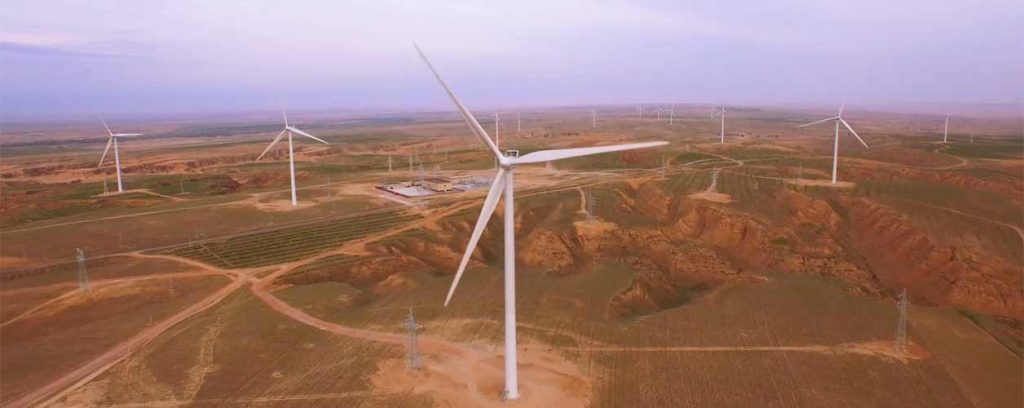
Aerial video in 4K
August 8, 2015What would entice a group of film-makers to leave the comfort of a luxurious hotel bed at two in the morning? The opportunity to capture a stunning dawn sky, is the answer. In May 2015, Director Andrew W Morse, pilot Stuart Sharpless and gimbal-operator / editor Hari Ravi left the five-star Kempinski Hotel Yinchuan in the middle of the night, then travelled two hours to the remote site of a Hanas wind farm. Their commitment was rewarded with a crisp and clear morning, as the sun lit the sky with vibrant pinks and reds. The Wei Li Jing wind farm is located in a desolate part of Ningxia Province, bordering Inner Mongolia. Even in summer, early morning temperatures are low, and the crew was thankful for the loan of Russian army style faux fur caps and Chinese army style heavy coats, to retain some body warmth against the wind chill of this region, which is ideally suited to generating electricity with wind turbines. Operating a DJI Inspire One unmanned aerial vehicle (UAV) with a 4K camera, the crew was able to capture wide angles of the landscape, high angles of the wind farms and dramatic imagery from close to the thirty-metre blades, as they rotated at high speed. Andrew first directed aerials in 1987, while producing a TVC for a US client at the America's Cup over Gage Roads, off Fremantle, Western Australia. He has since filmed TVCs and corporate footage with front-mounts, side-mounts, Continental centre-mounts and the spherical Wescam camera system, with triple gyroscopic balance to offset the vibrations of the aircraft. In 1992, he wrote, directed and produced a destination film for the Hong Kong Tourism Board, screened to inbound passengers on all Cathay Pacific flights. Entitled "Through the eyes of the Black Kite", the film showcased the vastly varied topography of the territory, as if from a bird's eye view. Until relatively recently, aerial filming has utilised the reliable, twin-engined, Bell JetRanger helicopter as the camera platform. However in remote locations this is not always an available resource and excessively expensive to 'ferry' to and from the location. Large UAVs are not always practical, as many require batteries which are prohibited on aircraft and even trains! Current lightweight UAVs, use batteries which can be permitted in aircraft carry-on baggage, provided strict fire-prevention criteria are met. Shenzhen based DJI, is a world leading UAV manufacturer and the Inspire One is its most versatile aircraft. Recent models which have been released include a version with a crop-spraying capability and one with a 6k camera. The film produced for Hanas New Energy, demonstrated the extent of just one of the ten wind farms which the company manages in Ningxia and Inner Mongolia. Hanas operates an aggregate 250 Vestas wind towers, with a daily generating capacity of 500 MW of power. View a low-resolution version of the film at Vimeo. -
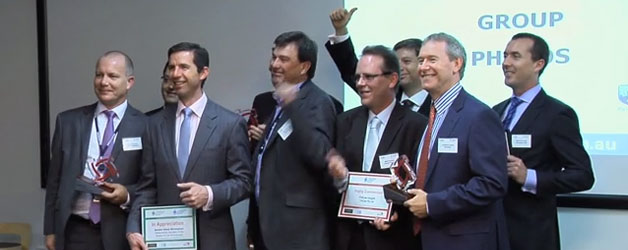
Consensus Software and GreenTech Awards
June 26, 2014Consensus Software Awards have been recognising excellence in Australian computer and industrial software since 1999.
The Consensus Group now manages a range of awards, including the Consensus Software Awards, Consensus Innovation Awards, Big Data Innovation Awards, IT Professional Awards, Student Innovation Awards, Consensus IT Awards, Consensus IT Writers Awards and the Consensus GreenTech Awards. The value of its identification of high value enterprises has been reflected by the establishment of the Consensus One Venture Capital fund to aid in early stage development of disruptive technologies.
Digital Tsunami founder, Andrew W Morse has been a judge of the software awards in the past, joining other industry experts in the collaborative assessment of submissions (the philosophy which is imbued in the company name).
In June 2014, Senator Simon Birmingham, Parliamentary Secretary to the Minister for the Environment, presented the Consensus GreenTech Award and Consensus Software Award trophies and certificates of excellence, to innovators from across the nation.
Digital Tsunami was engaged to capture the speeches, presentations and ambience of the event, hosted at IAG offices in the Sydney CBD. The two-hour event was represented in a six minute video.
View the Consensus Awards video
Two senior executives of Digital Tsunami have considerable video and film production expertise. Hong Kong based Producer Andy Chan, has been involved in television commercials, time-lapse sequences and television drama productions around the world, since the early eighties. He has also ‘done a degree in Chinese factories’, having filmed in hundreds of manufacturing plants in mainland China.
For almost 35 years, Executive Producer / Director Andrew W Morse, has worked on film and video projects. These have ranged from fifteen second commercials to ten-hour mini-series, corporate and web-distributed video from outback Australia to cities throughout Asia, TVCs in Sydney, Paris and Tokyo, feature films for Twentieth Century Fox and model launches for Mercedes-Benz.
See three examples of powerful video
The impact and effectiveness of video and the value it delivers with high search engine ranking is indisputable. The Consensus Group recognised this and is now planning filming around Australia to celebrate 15 years of business success.
Read about the increasing impact of video
If you are considering video for any aspect of your business, contact Digital Tsunami today.
-

3 videos with impact
February 18, 2014Video has impact. Visually, emotionally, commercially and especially on SEO. For intensely visual humans, the power of strong video lies in converting images instantly into emotions. For search engines, conveying data by video elevates the ranking in organic search results. Three videos which I have presented recently in LinkedIn, Facebook and other social media, are impeccable examples of the creative art. On Valentine’s Day, I was reminded of the brilliant video in which sensitive performances provided subtle counterpoint to a dramatic use of Post-It notes.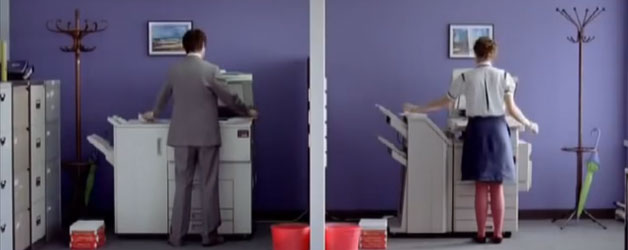 At a tech meet-up, a discussion of video led me to recall a simple concept conveyed by balletic camera movements. A British video for The Sunday Times which merged visuals from iconic artworks, TV shows and films into one seamless sequence.
At a tech meet-up, a discussion of video led me to recall a simple concept conveyed by balletic camera movements. A British video for The Sunday Times which merged visuals from iconic artworks, TV shows and films into one seamless sequence.
 Air New Zealand (ever creative in their approach to safety videos) collaborated with Sports Illustrated swimwear models on location in the Cook Islands, to bring a quirky style to engage frequent flyers.
Air New Zealand (ever creative in their approach to safety videos) collaborated with Sports Illustrated swimwear models on location in the Cook Islands, to bring a quirky style to engage frequent flyers.
 Brilliantly conceived and executed videos are being produced every day, around the world. The ubiquity of handheld devices has been a revolution for video, which can be viewed in high definition, in your hand, on demand.
Occasionally a video impresses so much that it ‘goes viral’ and is shared relentlessly. ‘Old Spice Man’ was one such example. A single spot initiated a long campaign. The awareness and revitalisation which that well-established brand attained was extraordinary, and exceptionally cost-effective.
The ‘cut-through’ that can be achieved for your brand with a novel approach to presenting your products and services, is immense.
Digital Tsunami founder Andrew W Morse first started in film and video production in 1979. His expertise has extended to producing and directing; feature films, mini-series, corporate films, music videos and major television commercials.
If you are considering video for any aspect of your business, contact Digital Tsunami today.
Brilliantly conceived and executed videos are being produced every day, around the world. The ubiquity of handheld devices has been a revolution for video, which can be viewed in high definition, in your hand, on demand.
Occasionally a video impresses so much that it ‘goes viral’ and is shared relentlessly. ‘Old Spice Man’ was one such example. A single spot initiated a long campaign. The awareness and revitalisation which that well-established brand attained was extraordinary, and exceptionally cost-effective.
The ‘cut-through’ that can be achieved for your brand with a novel approach to presenting your products and services, is immense.
Digital Tsunami founder Andrew W Morse first started in film and video production in 1979. His expertise has extended to producing and directing; feature films, mini-series, corporate films, music videos and major television commercials.
If you are considering video for any aspect of your business, contact Digital Tsunami today.